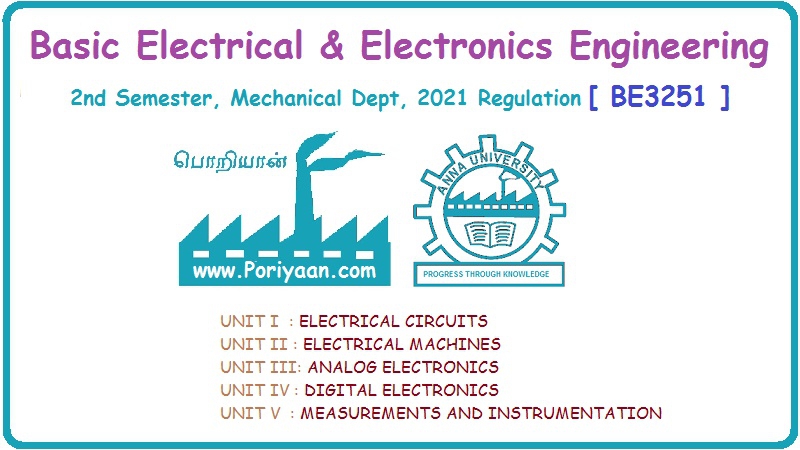Basic Electrical and Electronics Engineering: Unit II: Electrical Machines
Split Phase Induction Motors
Working Principle, Circuit diagram, Torque-speed characteristics, Applications
Split phase motor consists of two stator windings one is the main winding (or) running winding and another is auxiliary winding or starting winding.
SPLIT PHASE INDUCTION MOTORS
Split phase motor consists of two stator windings one is the main winding (or) running winding and another is auxiliary winding or starting winding. These two windings are displaced by 90 electrical degrees. The auxiliary winding has high resistance and low reactance and main winding has low resistance and high reactance. In fig 3.72 Ir is the current flowing through the running winding and Is is the current flowing through the starting windings. These two currents are out of phase as shown in fig 3.73. The auxiliary winding is used only for starting period. When the motor speed is about 75% of synchronous speed the auxiliary winding is disconnected from the circuit.
Torque-speed characteristics
Figure 3.74 shows the speed-torque characteristics of split phase induction motor. Figure shows upto 75% of speed, main and auxiliary windings are present in the circuit and after 75% of the speed is attained, only the main winding is present in the circuit.
The characteristics of this motor is
(i) The starting torque is 100% to 250% of the rated value
(ii) The breakdown torque is upto 300%
(iii) The power factor is 0.5 to 0.65
(iv) The efficiency is 55% to 65%
(v) The power rating is in the range of 1/20 to 1 HP
Applications
(i)
Fans
(ii)
Blowers
(iii)
Centrifugal pumps
(iv)
Washing machines
Basic Electrical and Electronics Engineering: Unit II: Electrical Machines : Tag: : Working Principle, Circuit diagram, Torque-speed characteristics, Applications - Split Phase Induction Motors
Related Topics
Related Subjects
Basic Electrical and Electronics Engineering
BE3251 2nd semester Mechanical Dept | 2021 Regulation | 2nd Semester Mechanical Dept 2021 Regulation
Basic Electrical and Electronics Engineering
BE3251 2nd Semester CSE Dept 2021 | Regulation | 2nd Semester CSE Dept 2021 Regulation

